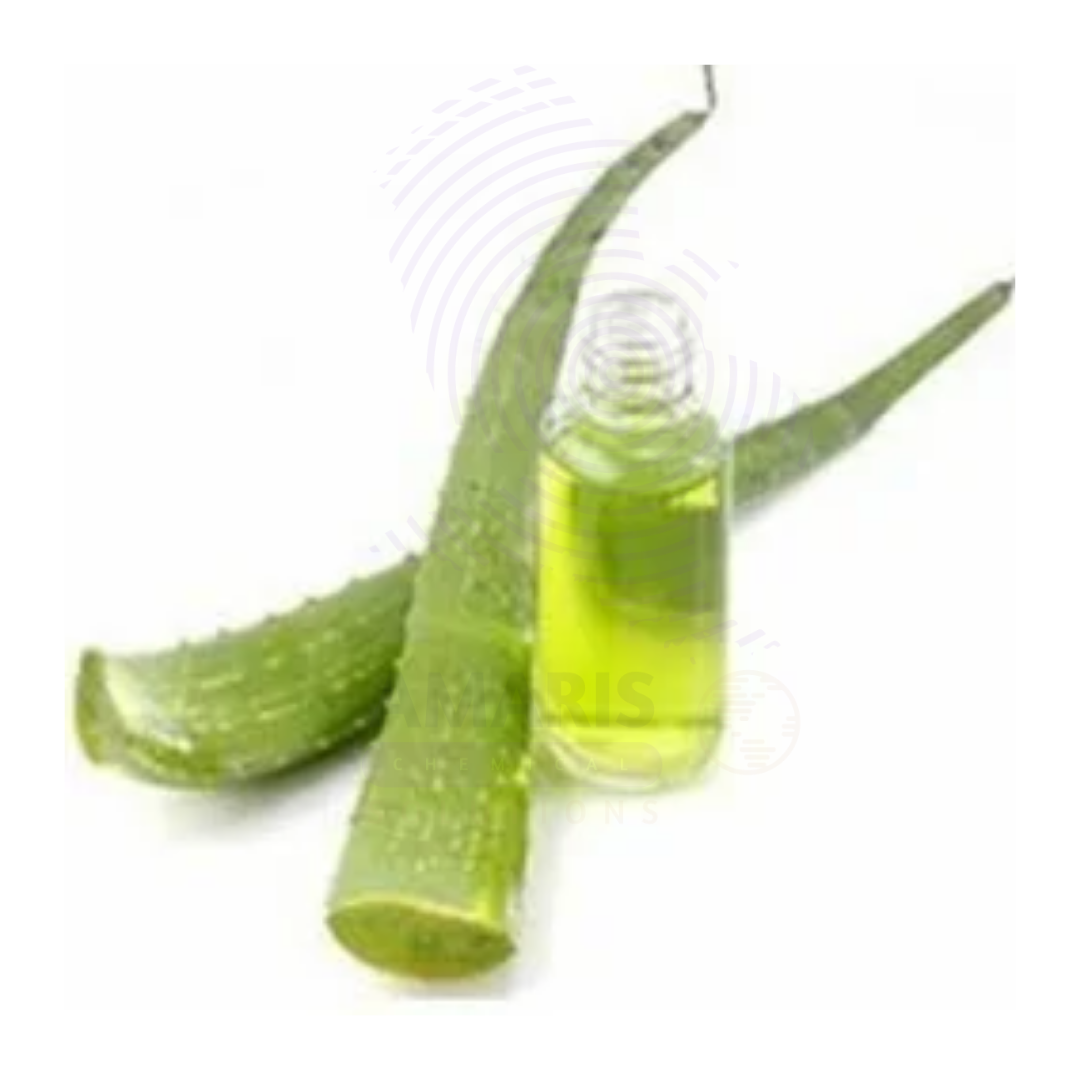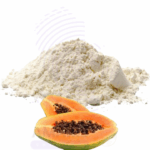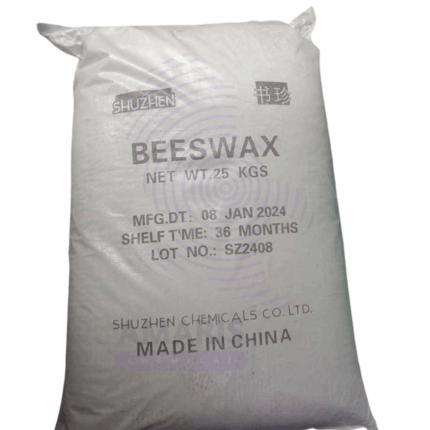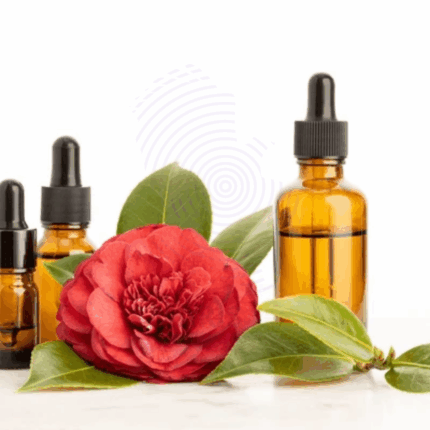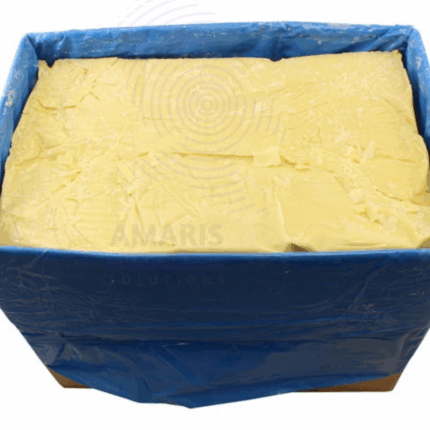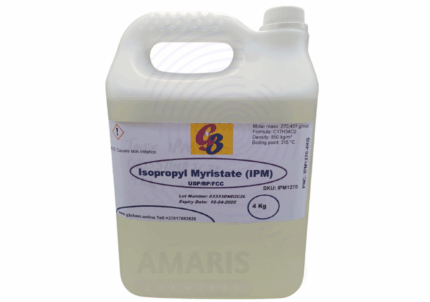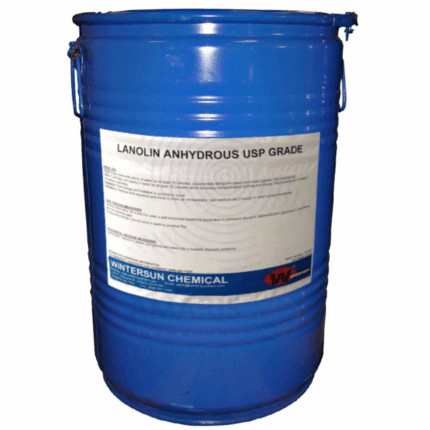Aloe Vera Oil
$ 29.32 Original price was: $ 29.32.$ 29.22Current price is: $ 29.22.
Aloe Vera Oil is an oil-based extract derived by infusing Aloe vera (Aloe barbadensis) leaves into a carrier oil such as coconut, soybean, or sunflower oil. It captures the beneficial compounds of aloe—including polysaccharides, vitamins, enzymes, and amino acids—in an oil-soluble form ideal for cosmetic, therapeutic, and personal care applications. Known for its soothing, anti-inflammatory, and moisturizing properties, Aloe Vera Oil is widely used in skin and hair care formulations.
This gentle, skin-friendly oil is suitable for sensitive skin and is commonly employed in after-sun products, healing ointments, massage oils, and anti-aging creams. It provides hydration, calms irritation, and promotes skin regeneration while adding emollient and conditioning benefits.
Aloe Vera Oil
Primary Uses
- Cosmetics and Personal Care
- Used in face and body creams for moisturizing and soothing irritated or dry skin.
- Incorporated into after-sun and sunburn care products for calming and cooling effects.
- Applied in healing balms and ointments to support wound healing and reduce inflammation.
- Used in lotions and body oils to deliver hydration with a light, non-greasy texture.
- Added to shampoos and conditioners to soothe the scalp and promote healthy hair.
- Included in anti-aging creams and serums for skin renewal and antioxidant benefits.
- Used in facial oils and massage blends for sensitive or acne-prone skin.
- Spa and Massage Products
- Commonly used in massage oils for its soothing and anti-inflammatory qualities.
- Blended into spa treatments, body wraps, and wellness formulations.
- Helps relieve muscle tension and moisturize the skin during therapy.
- Pharmaceutical and Therapeutic Applications
- Incorporated into herbal and topical formulations for burns, wounds, and skin irritation.
- Used in medicated ointments for dermatitis, eczema, and dry skin conditions.
- Included in aromatherapy products designed for skin recovery and care.
Secondary Uses
- Hair and Scalp Treatments
- Used in scalp serums and masks to reduce dryness, itching, and flaking.
- Added to natural hair oils and conditioners to strengthen hair and enhance shine.
- Lip and Hand Care Products
- Applied in lip balms, salves, and hand creams for intense hydration and repair.
- Helps relieve chapped skin and prevent moisture loss.
- Men’s Grooming and Shaving Products
- Included in aftershave oils and balms to reduce redness and irritation.
- Used in beard oils to condition both hair and skin.
| PACK SIZE |
5kg |
|---|
1. Basic Identification Attributes
- Botanical Source: Aloe barbadensis
- Common/Trade Name: Aloe Vera Oil
- INCI Name: Aloe Barbadensis Leaf Extract (in [carrier oil])
- CAS Number: 85507-69-3 (varies based on carrier oil)
- HS Code: 3301.90
- Synonyms: Aloe Oil, Aloe-infused Oil
2. Physical & Chemical Properties
- Physical State: Liquid oil
- Color & Odor: Pale yellow to golden; mild, herbal or neutral scent (depending on carrier oil)
- Solubility: Insoluble in water; soluble in oils and esters
- Density: Approx. 0.90 g/cm³
- Shelf Life: 12–24 months (depending on carrier and storage)
3. Safety & Hazard Attributes
- GHS Classification: Not classified as hazardous
- Toxicity: Non-toxic; safe for topical cosmetic use
- Allergen Information: Typically hypoallergenic; check carrier oil for potential allergens
- Exposure Limits: Not applicable under normal cosmetic use
4. Storage & Handling Attributes
- Storage Conditions: Store in a cool, dry place away from heat and sunlight
- Container Type: Amber glass or HDPE containers to protect from oxidation
- Shelf Life: 24 months under proper storage
- Handling Precautions: Keep sealed to avoid contamination or rancidity
5. Regulatory & Compliance Attributes
- Compliant with cosmetic and personal care regulations (EU, FDA, ASEAN)
- Suitable for use in natural and organic formulations (based on carrier oil)
- Manufactured in GMP-certified facilities for cosmetic ingredients
- Not for internal use unless food-grade certified
6. Environmental & Health Impact
- Biodegradability: Biodegradable
- Ecotoxicity: Low environmental impact
- Bioaccumulation: Not expected
Safety Handling Precautions
- PPE Required: Gloves recommended for bulk manufacturing
- Handling Guidelines: Use clean, dry tools to avoid microbial contamination
First Aid Measures
- Inhalation: Not applicable
- Skin Contact: Safe; discontinue use if irritation occurs (rare)
- Eye Contact: Rinse thoroughly with water if contact occurs
- Ingestion: Not intended for consumption; seek medical attention if ingested
Firefighting Measures
- Fire Hazards: Combustible
- Extinguishing Media: Dry chemical, foam, CO₂
- Special Precautions: Avoid high heat; use protective gear in case of fire
- Hazardous Combustion Products: Carbon oxides


 Preservatives(food)
Preservatives(food) Flavor Enhancers
Flavor Enhancers Acidulants
Acidulants Sweeteners
Sweeteners Antioxidants
Antioxidants Colorants(food)
Colorants(food) Nutraceutical Ingredients (food)
Nutraceutical Ingredients (food) Nutrient Supplements
Nutrient Supplements Emulsifiers
Emulsifiers
 Collectors
Collectors Dust Suppressants
Dust Suppressants Explosives and Blasting Agents
Explosives and Blasting Agents Flocculants and Coagulants
Flocculants and Coagulants Frothers
Frothers Leaching Agents
Leaching Agents pH Modifiers
pH Modifiers Precious Metal Extraction Agents
Precious Metal Extraction Agents
 Antioxidants(plastic)
Antioxidants(plastic) Colorants (Pigments, Dyes)
Colorants (Pigments, Dyes) Fillers and Reinforcements
Fillers and Reinforcements Flame Retardants
Flame Retardants Monomers
Monomers Plasticizers
Plasticizers Polymerization Initiators
Polymerization Initiators Stabilizers (UV, Heat)
Stabilizers (UV, Heat)
 Antifoaming Agents
Antifoaming Agents Chelating Agents
Chelating Agents Coagulants and Flocculants
Coagulants and Flocculants Corrosion Inhibitors
Corrosion Inhibitors Disinfectants and Biocides
Disinfectants and Biocides Oxidizing Agents
Oxidizing Agents pH Adjusters
pH Adjusters Scale Inhibitors( water)
Scale Inhibitors( water)
 Antioxidants(cosmetic)
Antioxidants(cosmetic) Emollients
Emollients Fragrances and Essential Oils
Fragrances and Essential Oils Humectants
Humectants Preservatives
Preservatives Surfactants(cosmetic)
Surfactants(cosmetic) Thickeners
Thickeners UV Filters
UV Filters
 Fertilizers
Fertilizers Soil Conditioners
Soil Conditioners Plant Growth Regulators
Plant Growth Regulators Animal Feed Additives
Animal Feed Additives Biostimulants
Biostimulants Pesticides (Herbicides, Insecticides, Fungicides)
Pesticides (Herbicides, Insecticides, Fungicides)
 Active Pharmaceutical Ingredients (APIs)
Active Pharmaceutical Ingredients (APIs) Excipients
Excipients Solvents(pharmaceutical)
Solvents(pharmaceutical) Antibiotics
Antibiotics Antiseptics and Disinfectants
Antiseptics and Disinfectants Vaccine Adjuvants
Vaccine Adjuvants Nutraceutical Ingredients (pharmaceutical)
Nutraceutical Ingredients (pharmaceutical) Analgesics & Antipyretics
Analgesics & Antipyretics
 Analytical Reagents
Analytical Reagents Solvents(lab)
Solvents(lab) Chromatography Chemicals
Chromatography Chemicals Spectroscopy Reagents
Spectroscopy Reagents microbiology-and-cell-culture-reagents
microbiology-and-cell-culture-reagents Molecular Biology Reagents
Molecular Biology Reagents Biochemical Reagents
Biochemical Reagents Inorganic and Organic Standards
Inorganic and Organic Standards Laboratory Safety Chemicals
Laboratory Safety Chemicals Specialty Laboratory Chemicals(Special Laboratory Equipment)
Specialty Laboratory Chemicals(Special Laboratory Equipment)
 Demulsifiers
Demulsifiers Hydraulic Fracturing Fluids
Hydraulic Fracturing Fluids Scale Inhibitors(oil)
Scale Inhibitors(oil) Surfactants(oil)
Surfactants(oil) Drilling Fluids
Drilling Fluids
 Dyes and Pigments
Dyes and Pigments Bleaching Agents
Bleaching Agents Softening Agents
Softening Agents Finishing Agents
Finishing Agents Antistatic Agents
Antistatic Agents
 Admixtures
Admixtures Waterproofing Agents
Waterproofing Agents Sealants and Adhesives
Sealants and Adhesives Curing Compounds
Curing Compounds Concrete Repair Chemicals
Concrete Repair Chemicals Anti-Corrosion Coatings
Anti-Corrosion Coatings
 Surfactants(cleaning)
Surfactants(cleaning) Builders
Builders Enzymes
Enzymes Solvents (Cleaning)
Solvents (Cleaning) Fragrances
Fragrances
 Electronic Chemicals
Electronic Chemicals Catalysts
Catalysts Lubricants
Lubricants Photographic Chemicals
Photographic Chemicals Refrigerants
Refrigerants Automotive chemicals
Automotive chemicals Pyrotechnic Chemicals
Pyrotechnic Chemicals
 Biodegradable Surfactants
Biodegradable Surfactants Bio-based Solvents
Bio-based Solvents Renewable Polymers
Renewable Polymers Carbon Capture Chemicals
Carbon Capture Chemicals Wastewater Treatment Chemicals
Wastewater Treatment Chemicals
 Pigments
Pigments Solvents(paint)
Solvents(paint) Specialty Coatings
Specialty Coatings Binders/Resins
Binders/Resins Additives
Additives Driers
Driers Anti-Corrosion Agents
Anti-Corrosion Agents Functional Coatings
Functional Coatings Application-Specific Coatings
Application-Specific Coatings
 Fresh Herbs
Fresh Herbs Ground Spices
Ground Spices Whole Spices
Whole Spices Spice Blends
Spice Blends Dried Herbs
Dried Herbs
 Leavening Agents
Leavening Agents Dough Conditioners
Dough Conditioners Flour Treatments
Flour Treatments Fat Replacers
Fat Replacers Decoratives
Decoratives Preservatives(baking)
Preservatives(baking)
 Plasticizers & Softeners
Plasticizers & Softeners Reinforcing Agents
Reinforcing Agents Adhesion Promoters
Adhesion Promoters Vulcanizing Agents
Vulcanizing Agents Antidegradants
Antidegradants Blowing Agents
Blowing Agents Fillers & Extenders
Fillers & Extenders Accelerators & Retarders
Accelerators & Retarders